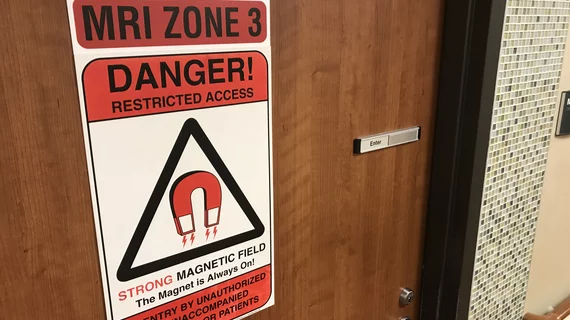FDA report details MRI accident caused by sex toy
A recent adverse event report filed with the U.S. Food and Drug Administration details an MRI accident involving a sex toy and a patient.
According to the report, the event occurred on April 7. The patient involved in the accident was screened for metal prior to undergoing her MRI, but did not disclose the presence of a “butt plug."
The patient went into the MRI and completed her scan; however, the exam went awry when the tech went to retrieve the patient.
“She went in for the MRI and when the MRI was over, and the tech was pulling the table out the patient started to scream," the report reads. "The patient stated that she felt nauseous, was in pain, and felt like she was going to pass out."
The report did not disclose whether the patient sustained injuries, but it did indicate that the staff called an ambulance and the patient was transported to a nearby hospital.
There are numerous social media posts about the incident, each of them touting different versions of the event. There is even an image alleged to be from the patient’s imaging following the accident, but there has been no confirmation that the image in question is legitimate. It should also be noted that the FDA’s attempts to contact the patient in order to follow-up on her case have been unsuccessful.
This latest incident is one of several serious MRI accidents that have been reported this year. In January, a man accompanying his mother to her MRI exam took a bullet to his abdomen when the magnet caused his gun to involuntarily discharge, and another involved a nurse being pinned between the magnet and a gurney after transporting a patient to the MRI suite.
Many experts in the field are concerned that the frequency of these accidents will continue to occur as MRI technology changes. This has prompted a call for more standardized MRI safety measures from providers and patients alike.
The FDA adverse event report can be viewed here.
Patient presentations in the emergency room with rectal foreign bodies are not that unusual. Here is a clinical photo gallery of numerous patients cases — PHOTO GALLERY: Abdominal, pelvic and rectal foreign bodies.

